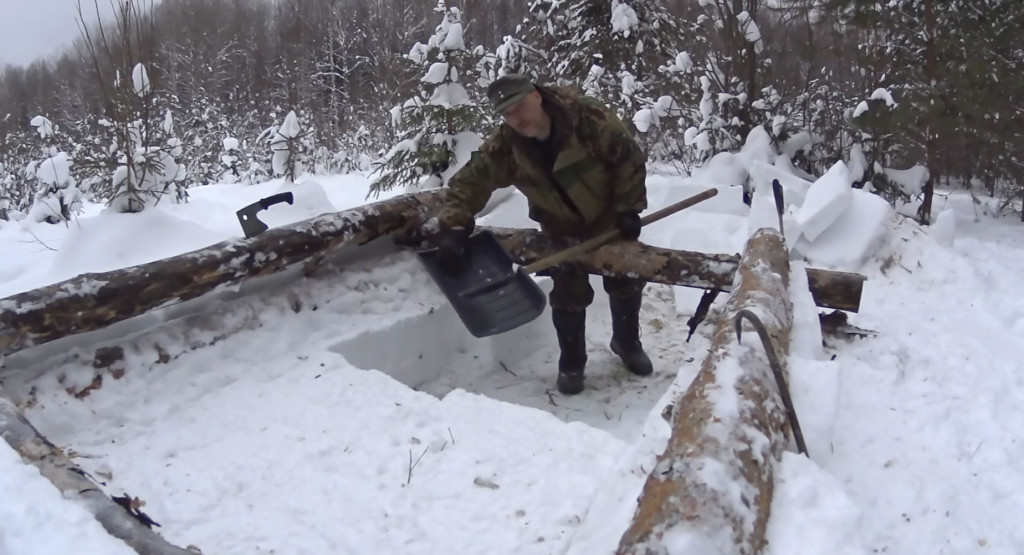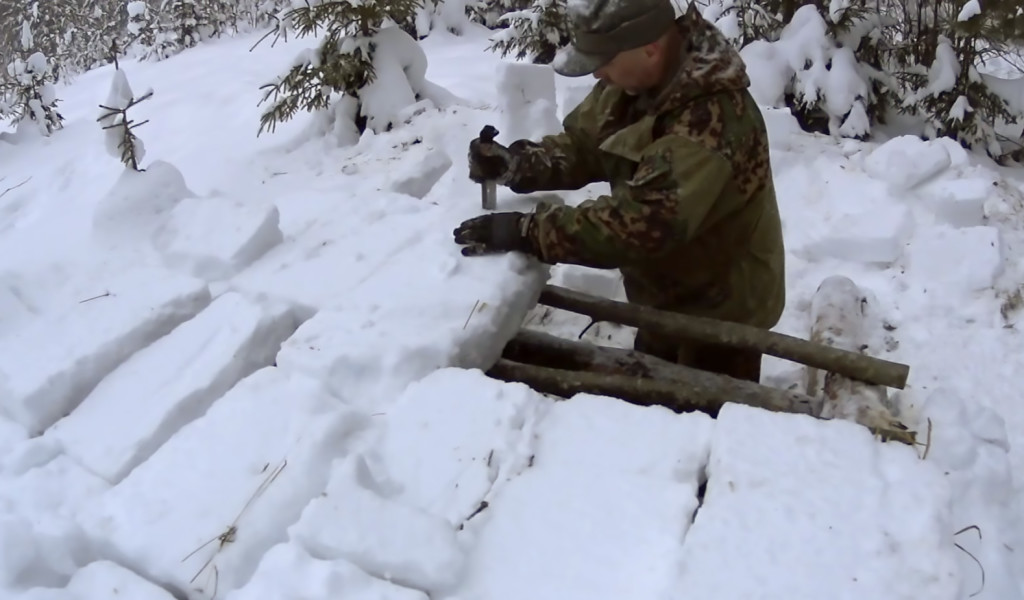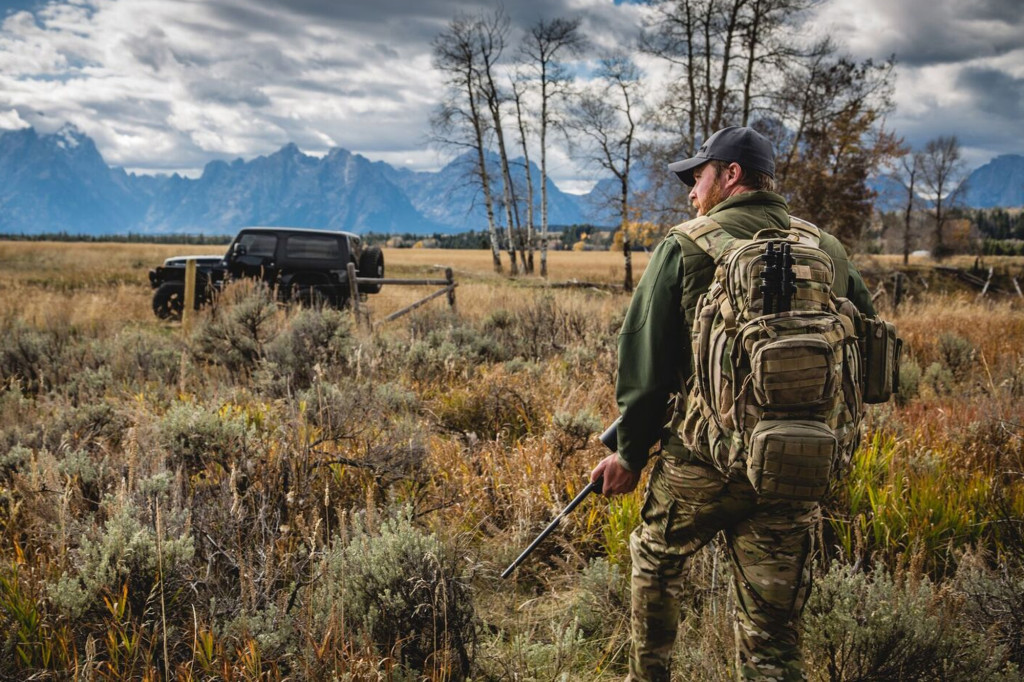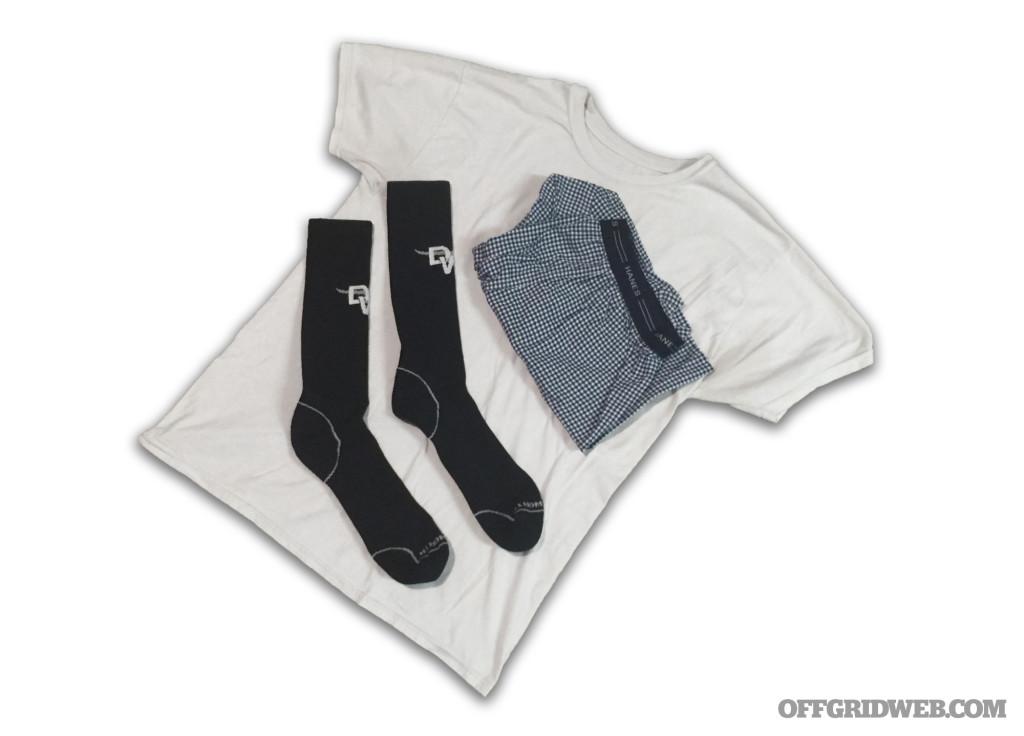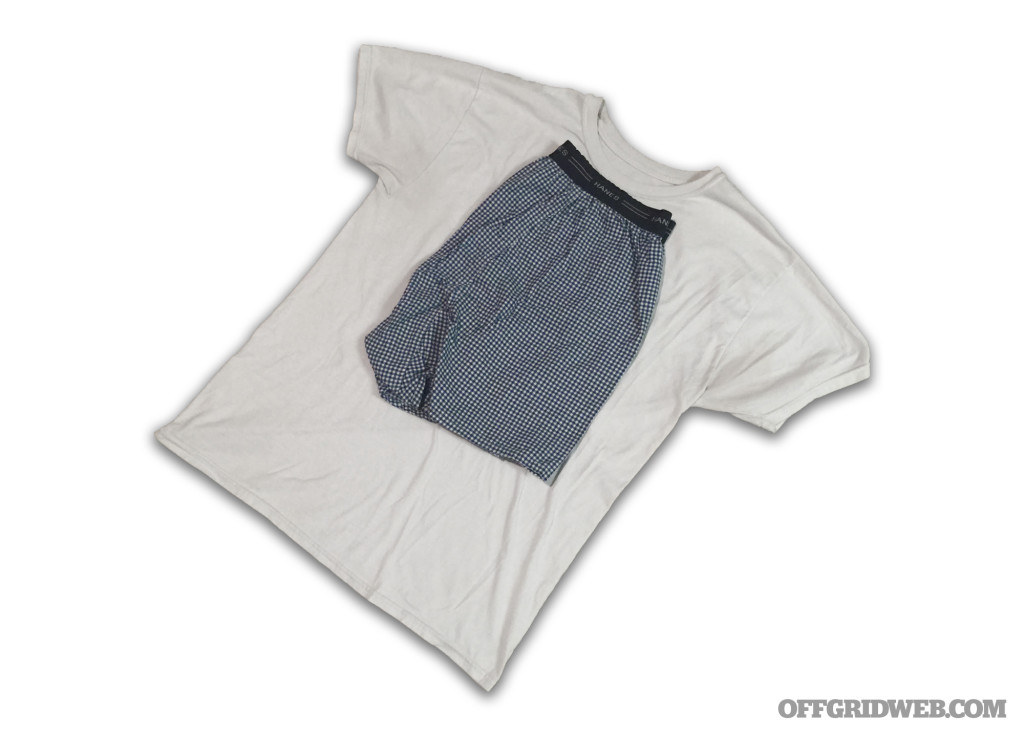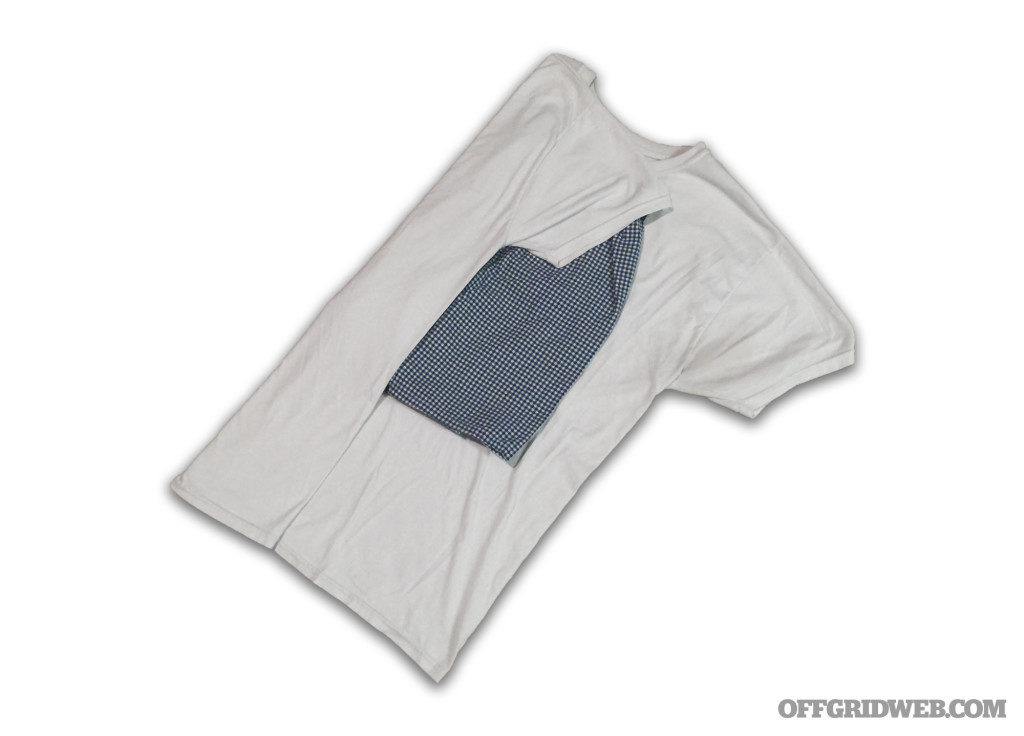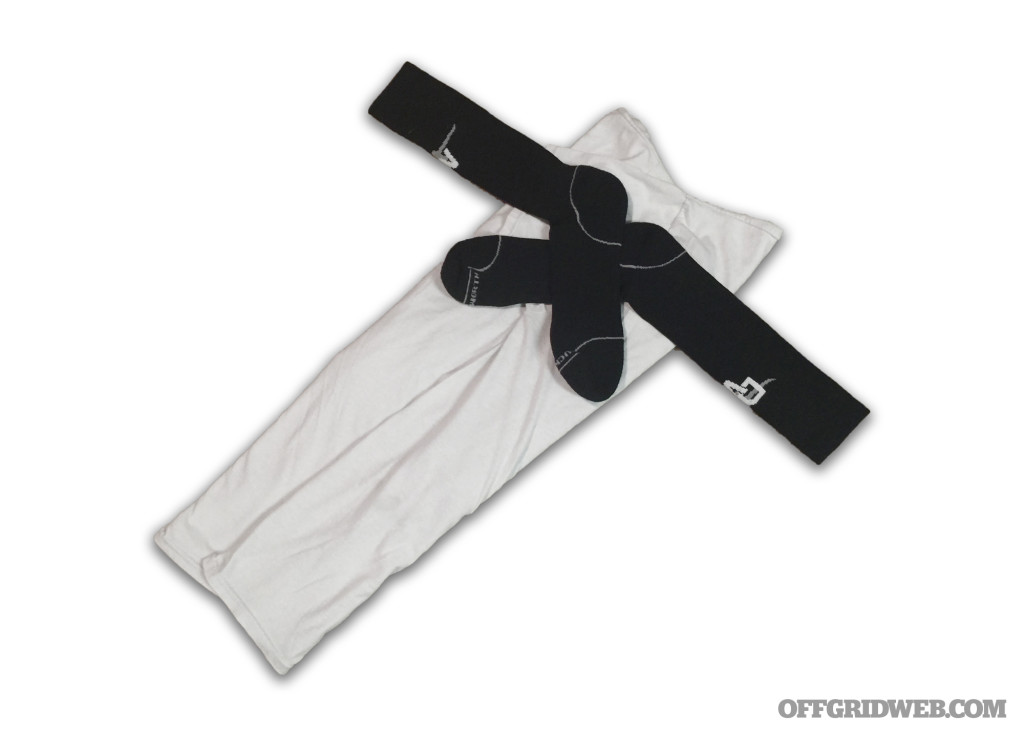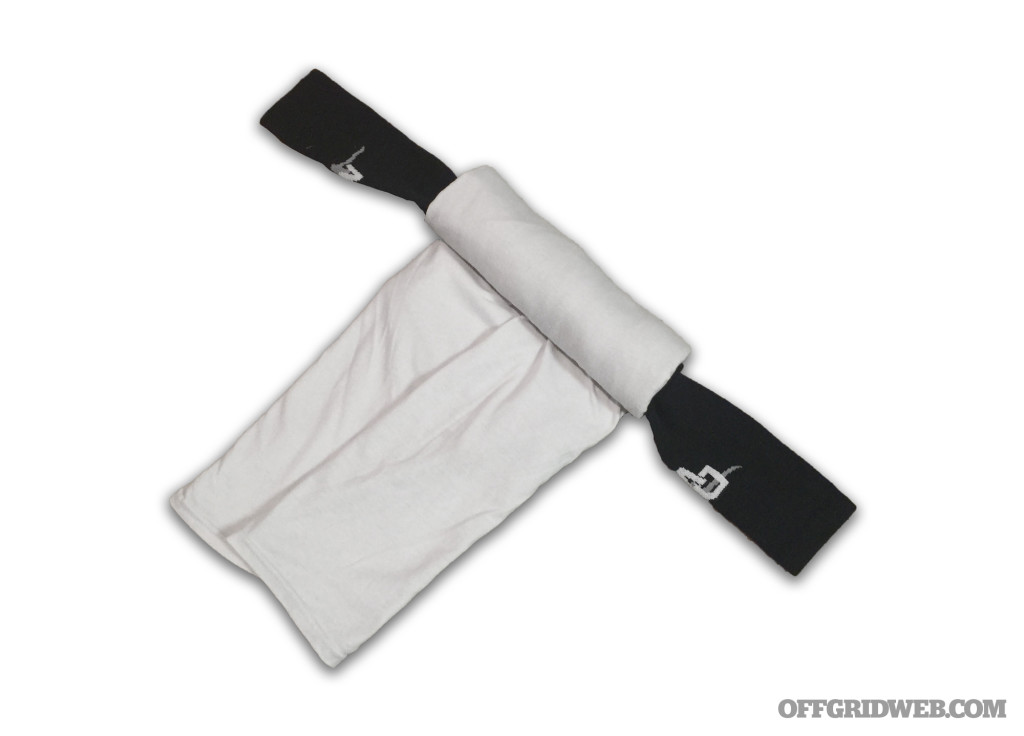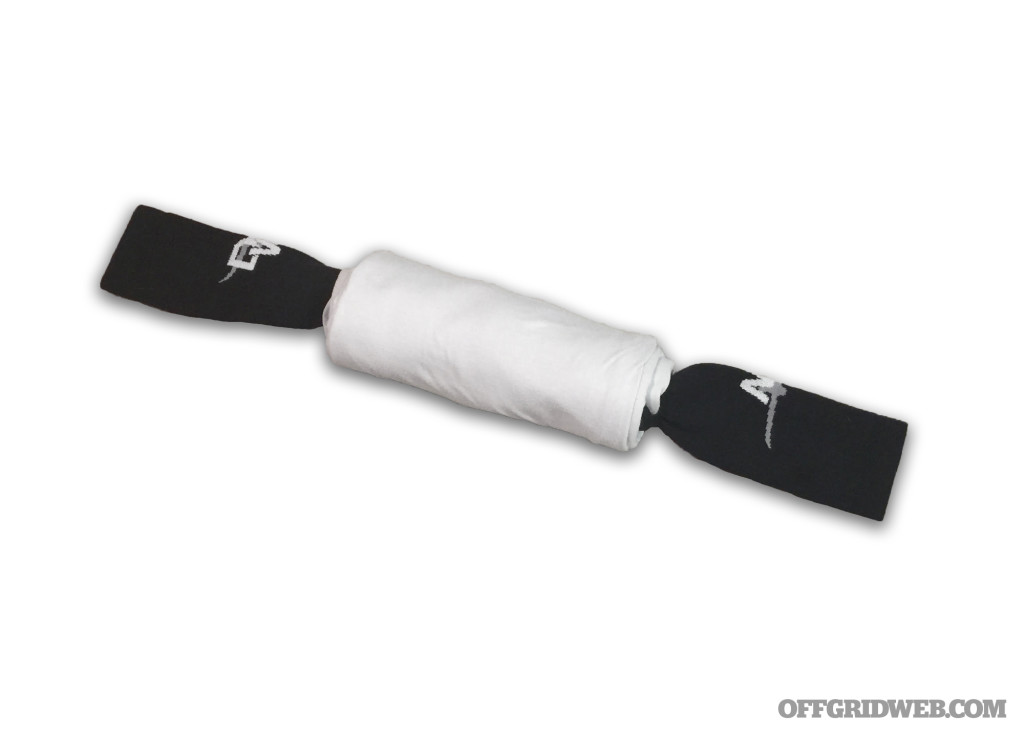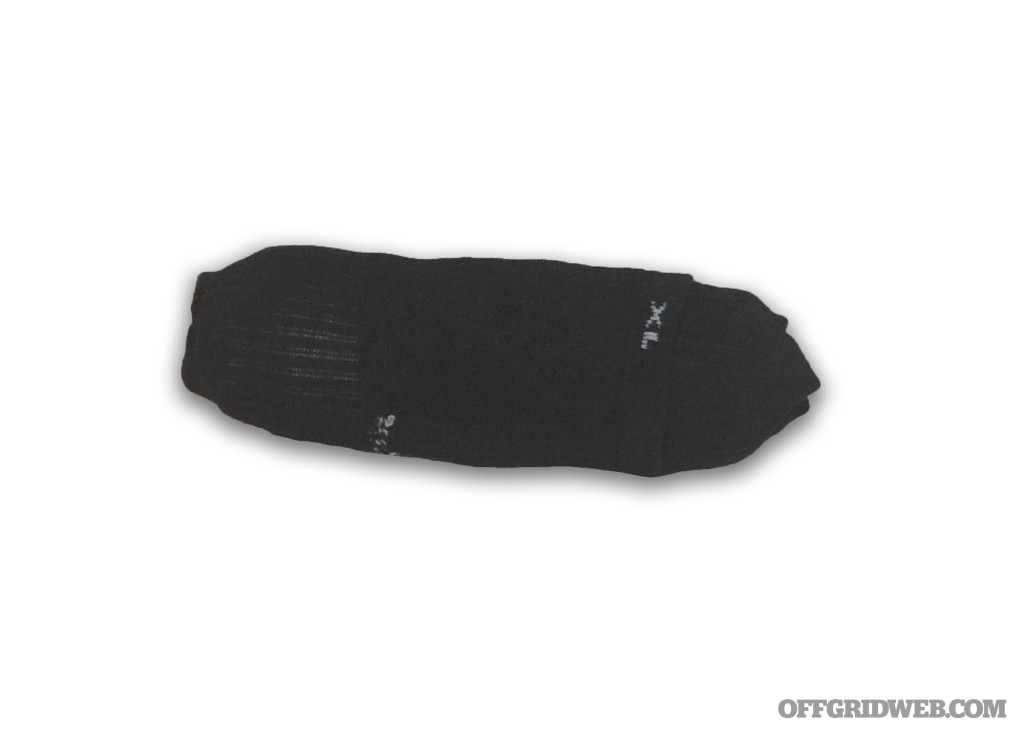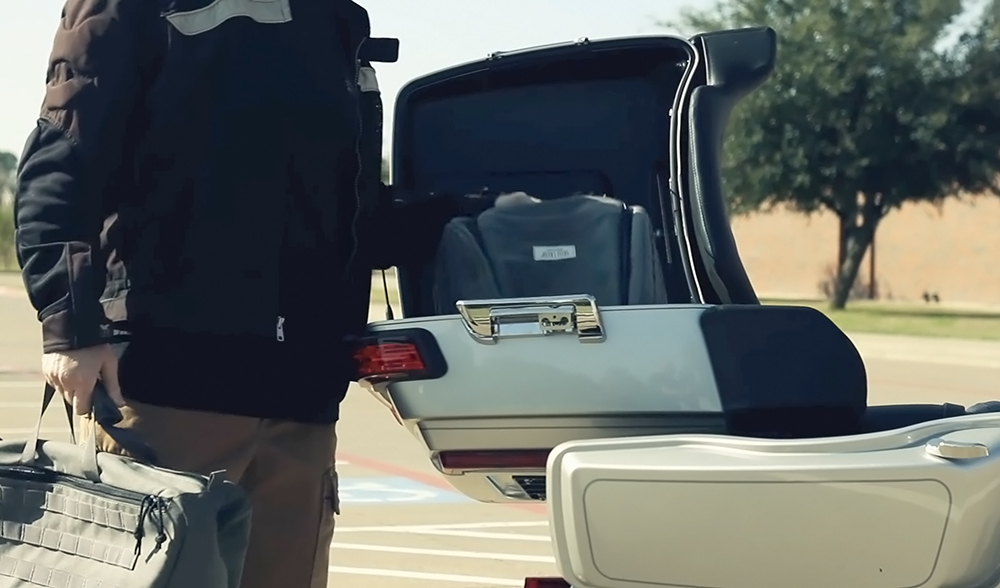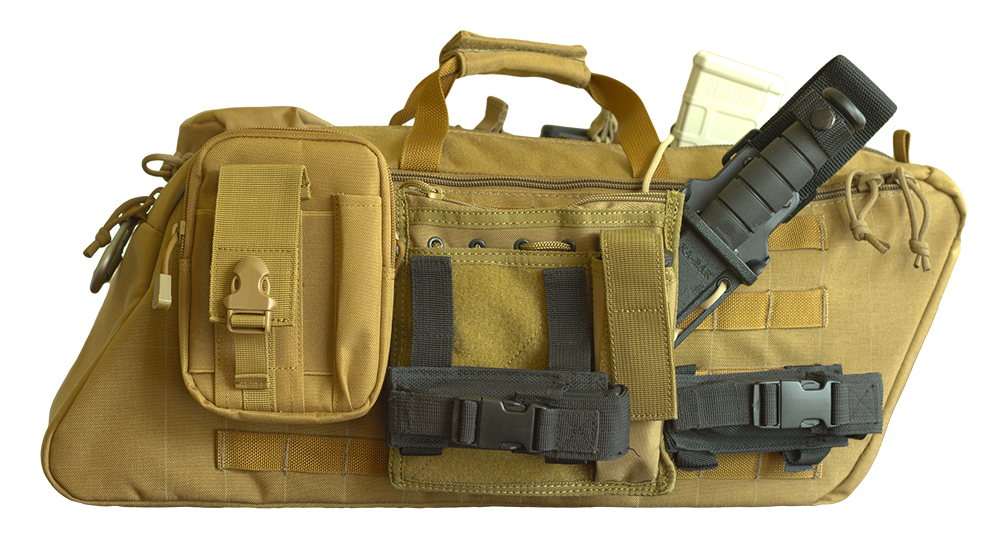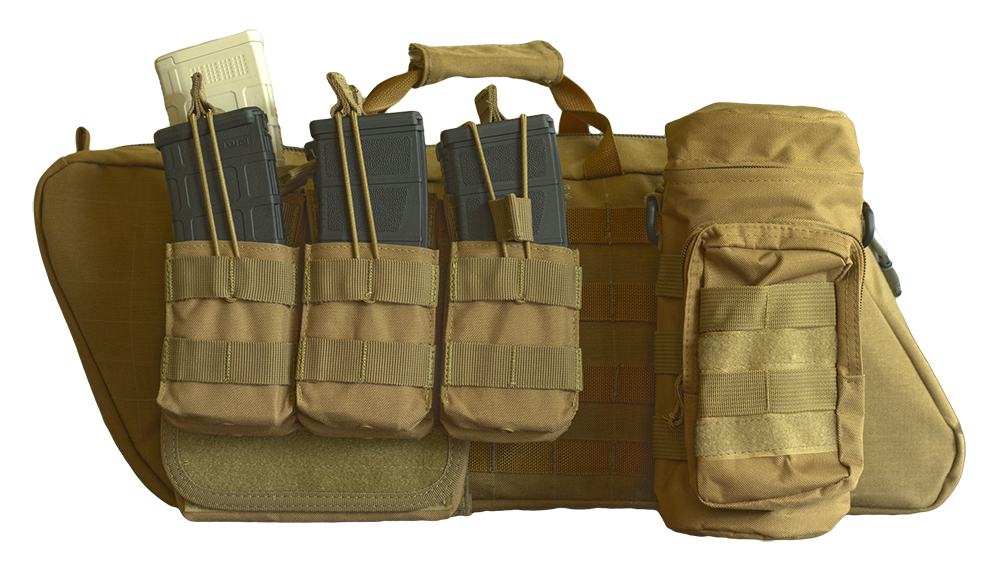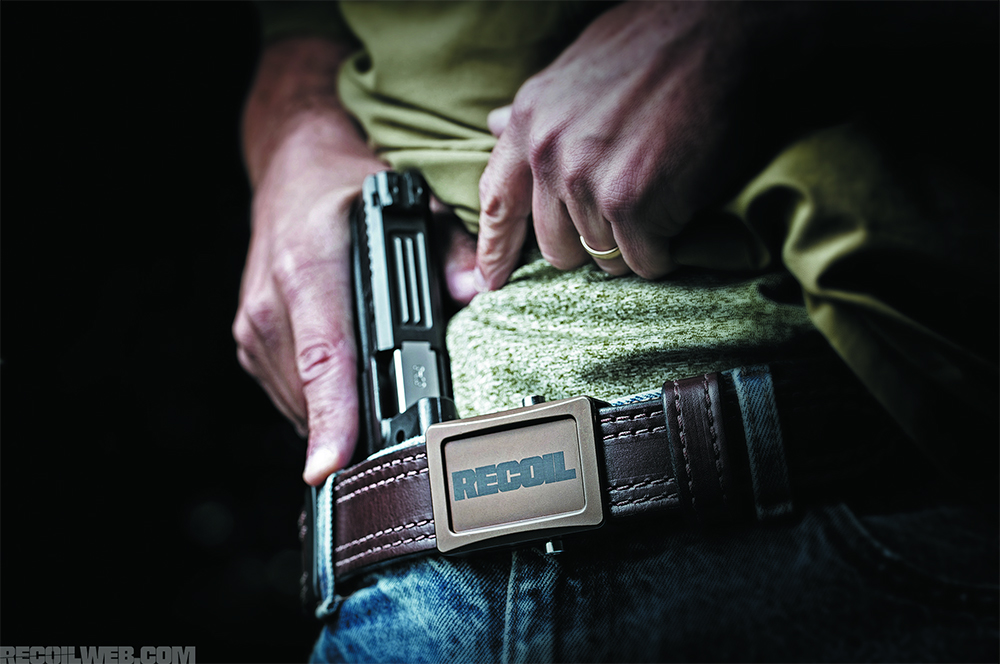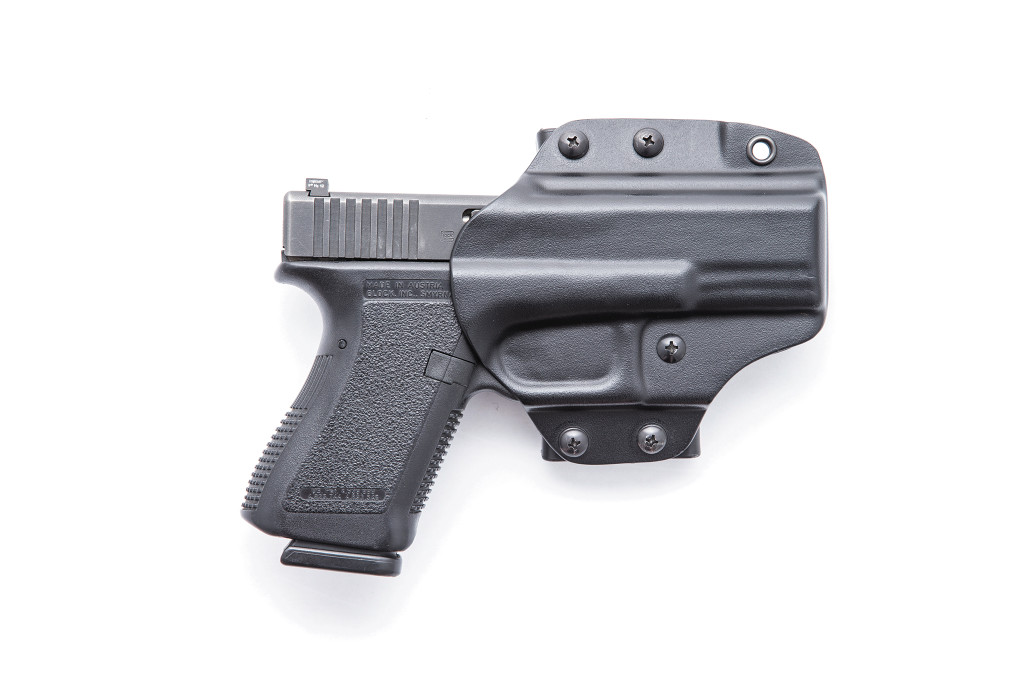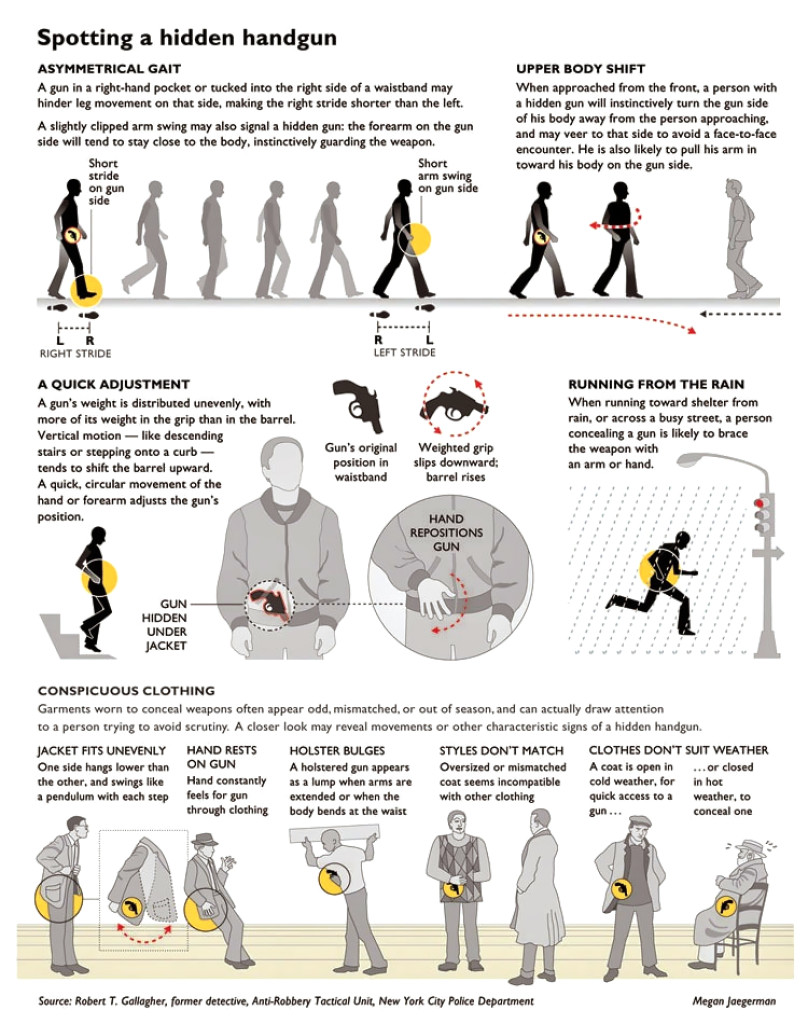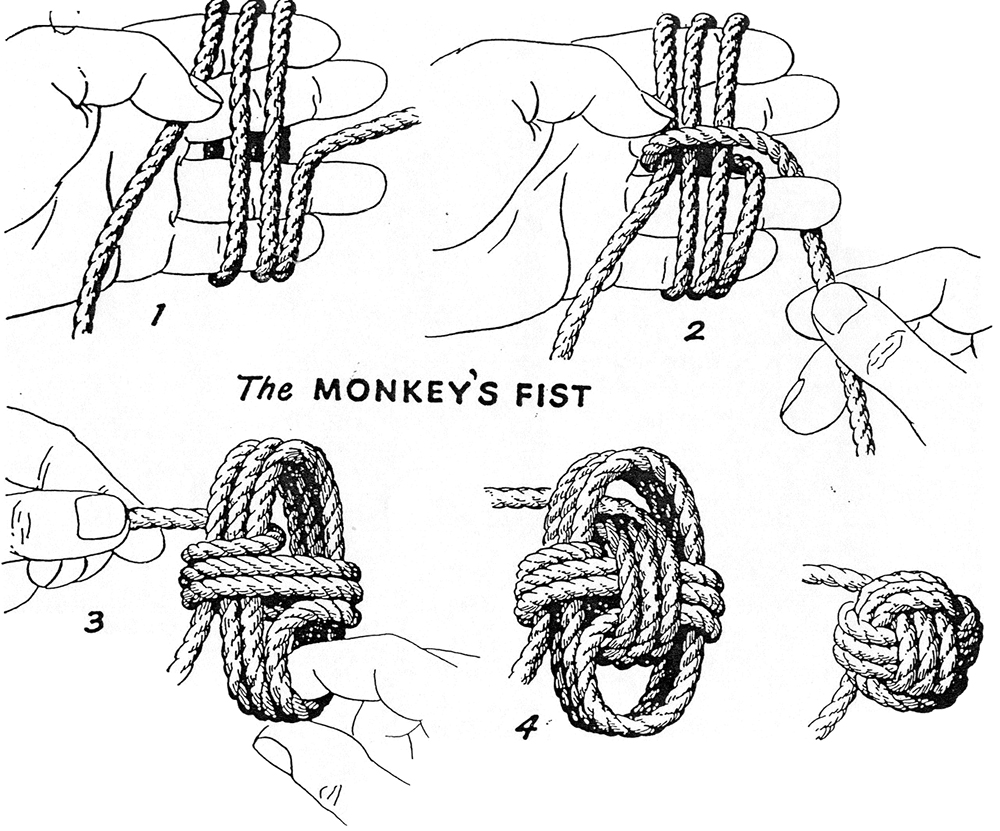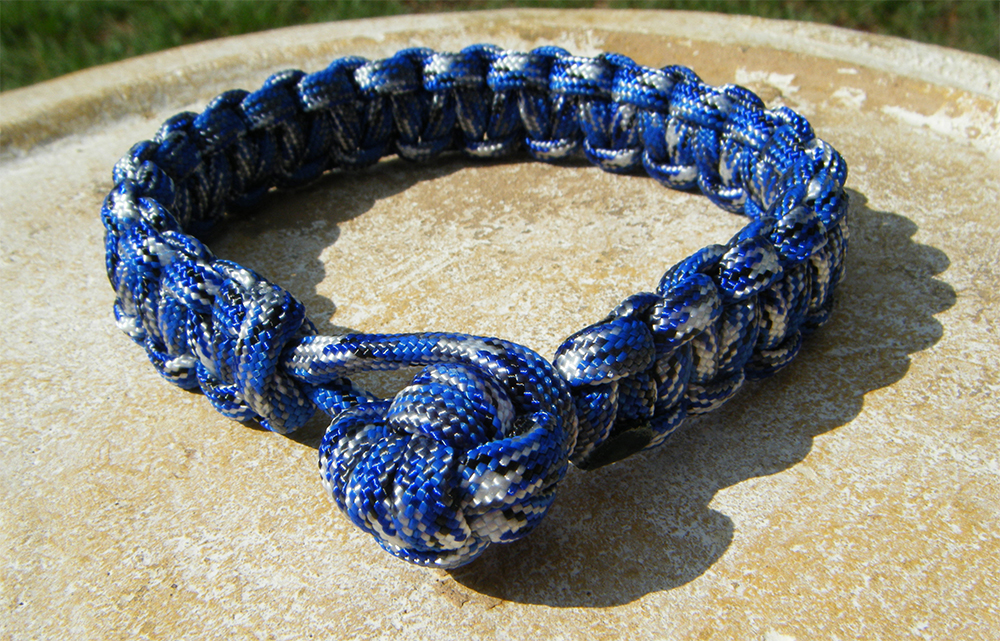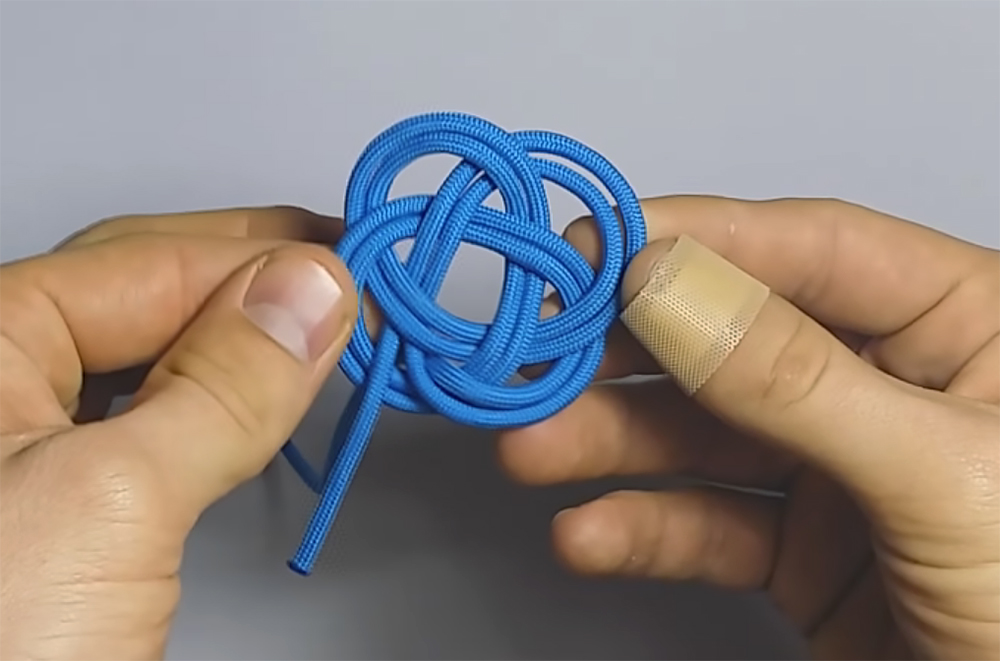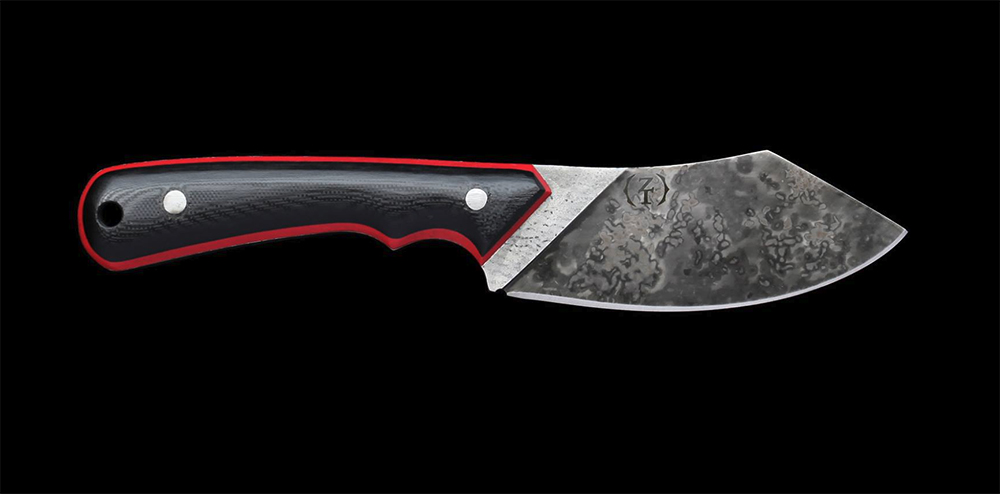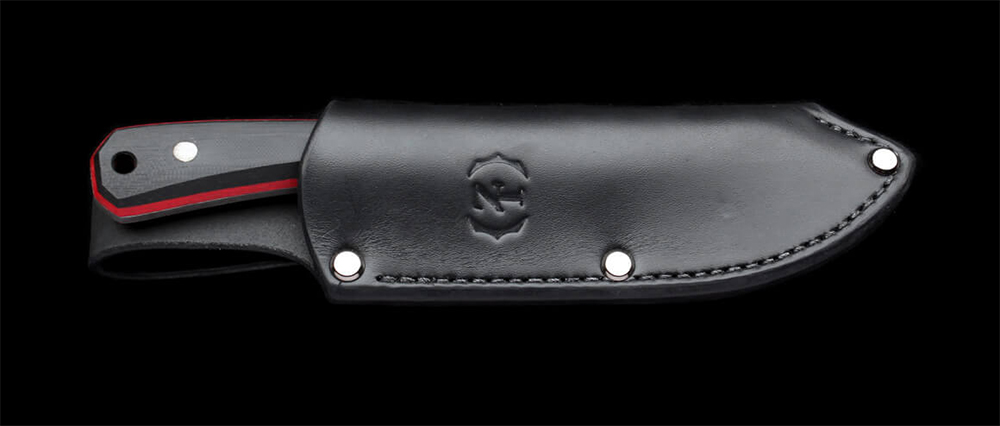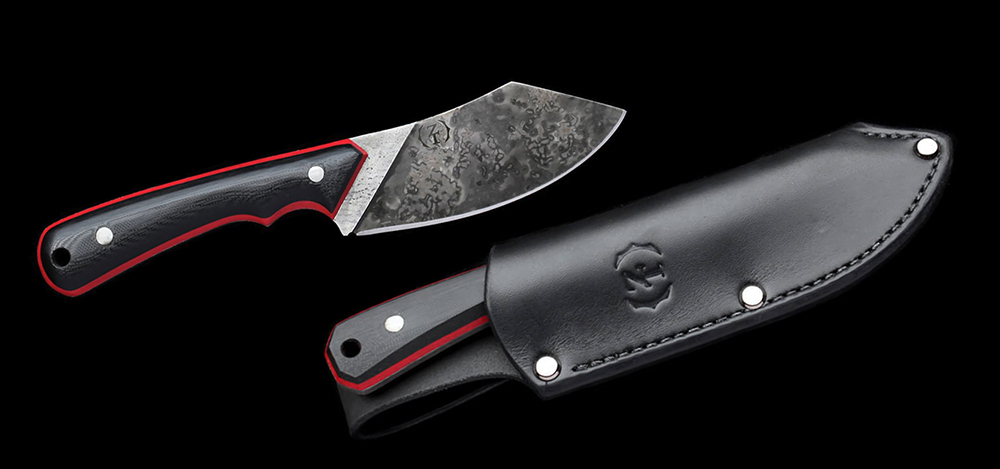Think about the most essential items you carry in your pockets every day — the items you'd never leave home without. This answer likely won't be exactly the same for any two readers, but there is some common ground. For most of us, those the cornerstones of every-day carry (EDC) include a cell phone, keys, and a wallet. It's generally wise to carry some sort of knife, and many of us also use items like a flashlight, multi tool, or pen. But the absolute essentials are almost always the same three items.
Despite this information, we sometimes feel that EDC loadouts overlook the importance of these cornerstone elements, especially the wallet. We've seen way too many people carry $300 folding knives and fancy titanium tools one pocket away from a fat wallet that has “back problems” written all over it. A beat-up old billfold looks neglected next to other high-end gear, but more importantly, it's not a very efficient use of pocket space.

The slim Trayvax Element wallet is dwarfed by a normal leather wallet.
EDC fans may want to think outside the box when it comes to their wallets, and Washington-state-based company Trayvax claims to have developed a solution that improves upon the traditional billfold formula. Actually, they claim to have developed several solutions. The Trayvax wallet line consists of five different models, each offering an innovative approach to storing cash and cards.
About Trayvax Wallets
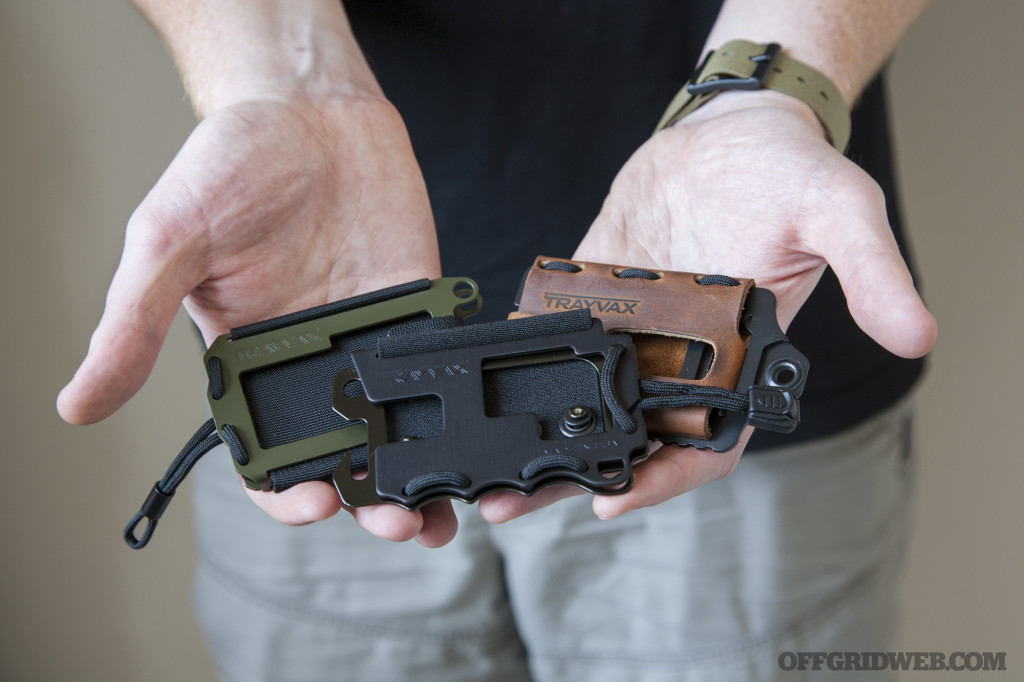
From left to right: the Trayvax Axis, Original, and Element.
The concept for the Trayvax wallet began in 2013, when founder and inventor Mark King was attempting to create — strangely enough — a “reusable plastic bag carrier”. This plastic bag device didn't work out as planned, but the machined aluminum shape gave Mark a new idea: a tough metal-framed wallet. After many protoypes and revisions, the Trayvax Original wallet was born, consisting of steel and aluminum plates, some elastic, hook-and-loop fabric, grommets, and paracord.
Since 2013, Mark has grown his business to include four more wallet designs and a variety of parts and accessories. The very first wallets were made in the USA, and the company has stayed true to this ethos — all of Trayvax's products are still American-made to this day.
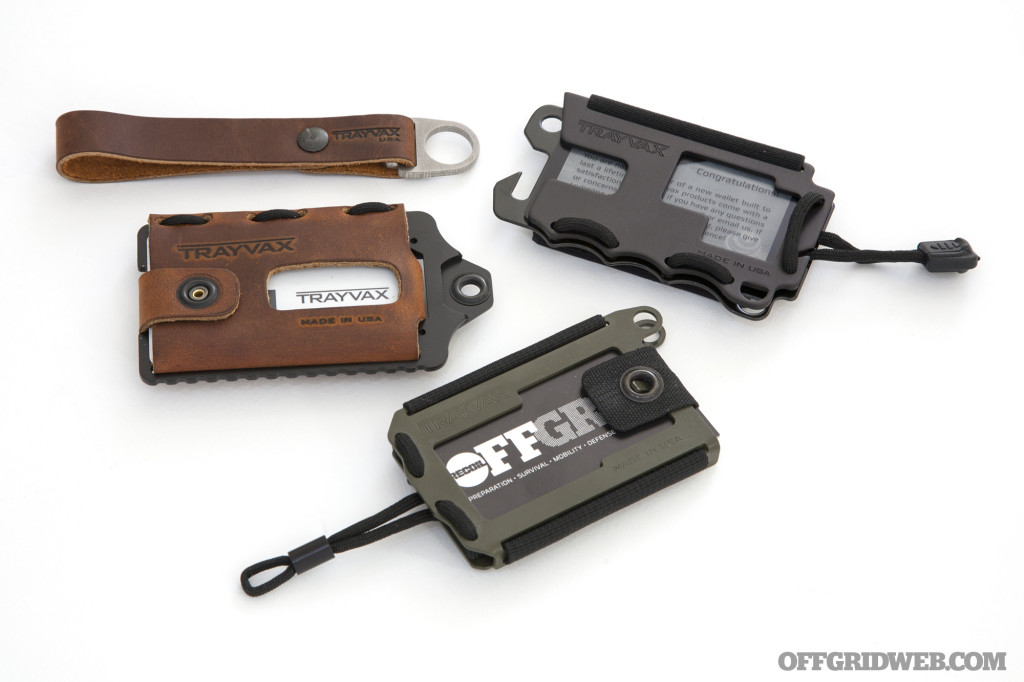
After hearing about the success of this company and its wallets, we recently requested a sample to test out, in order to see if it's all hype or if it's truly EDC-worthy. Trayvax was kind enough to send us three of its most popular wallets, the Axis, Element, and Original. They even threw in a Keyton bottle opener keychain. Read on for our opinions on each of these items.
The Trayvax Original
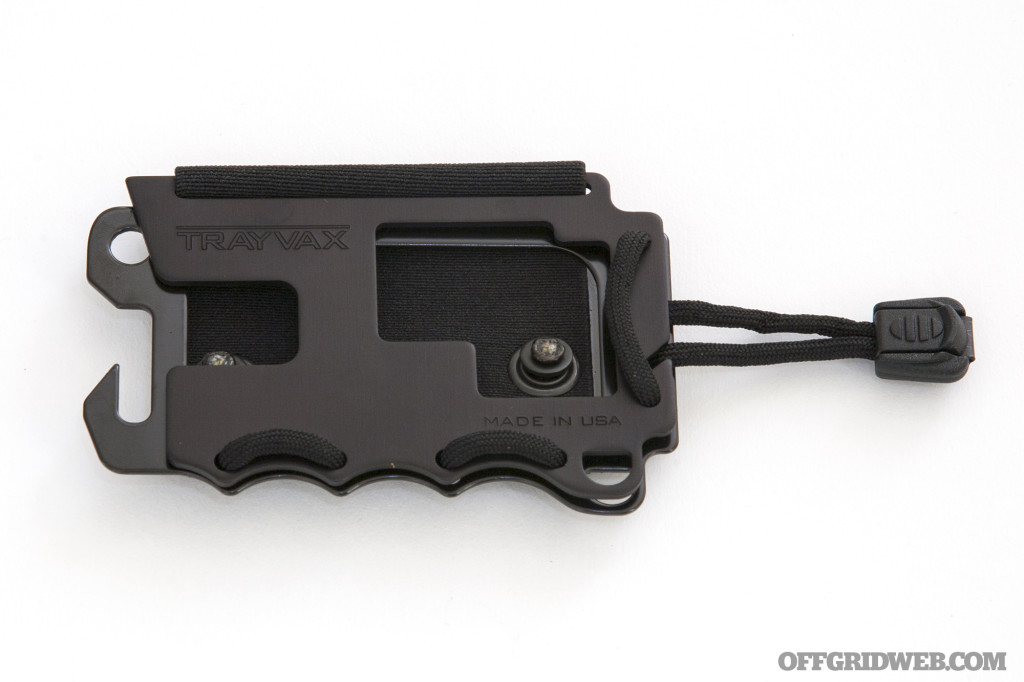
In order to get a good feel for these wallets, we started at the beginning. The Original wallet is available in five colors: black, grey, blue, orange, and bare sandblasted aluminum. Each Trayvax Original wallet is available for a very reasonable MSRP of $30, and is composed of a sheet of anodized aluminum sandwiched atop another sheet of cold-rolled steel.

The two pieces are loosely joined by woven paracord on two edges, and by a piece of elastic fabric with hook-and-loop/Velcro material on the third edge. To open the wallet, peel away the hook-and-loop section. This releases tension on the elastic, thereby releasing tension on the two metal plates. Cards slide into the center of the wallet, and cash can be inserted underneath the elastic strap on the back side. Listed capacity is up to 14 (yes, fourteen) cards and 5 bills, or you can expand it further with a Trayvax High Roller extended strap (but that seems to defeat the purpose, in our opinion).
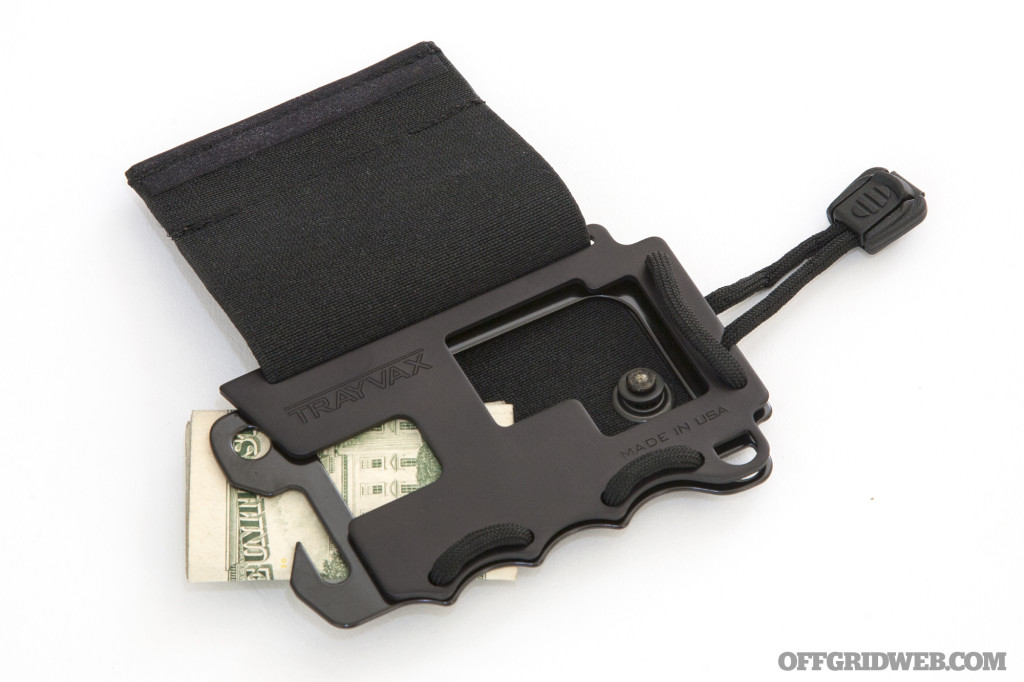
Like all Trayvax wallets, the Original has some hidden tricks up its sleeve. First of all, its metal construction is RFID-blocking, so it can prevent wireless identity theft and credit card skimming. The leading edge has a built-in bottle opener, as well as an attachment hole for a lanyard or small carabiner, such as the Trayvax titanium carabiner.
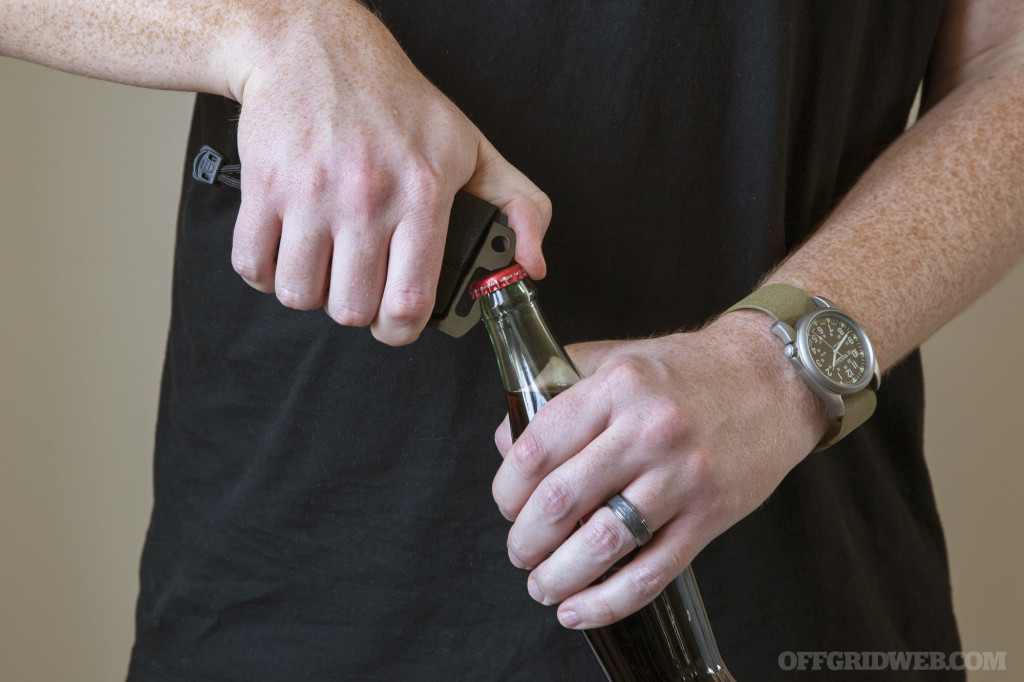
Our experience with the Trayvax Original was positive for the most part. It looks cool, it's made in the USA, and it's very affordable. We liked the stretchy elastic since it allows the user to cinch the wallet together, but we found that this design works better with thicker contents. With the rated minimum of 3 cards and some cash, there wasn't enough tension in the elastic to keep our cards from slipping out. Even with six credit/gift cards in the wallet, the retention is far from 100% secure. The cards are easy to access quickly, but may also begin to slip out when jostled.
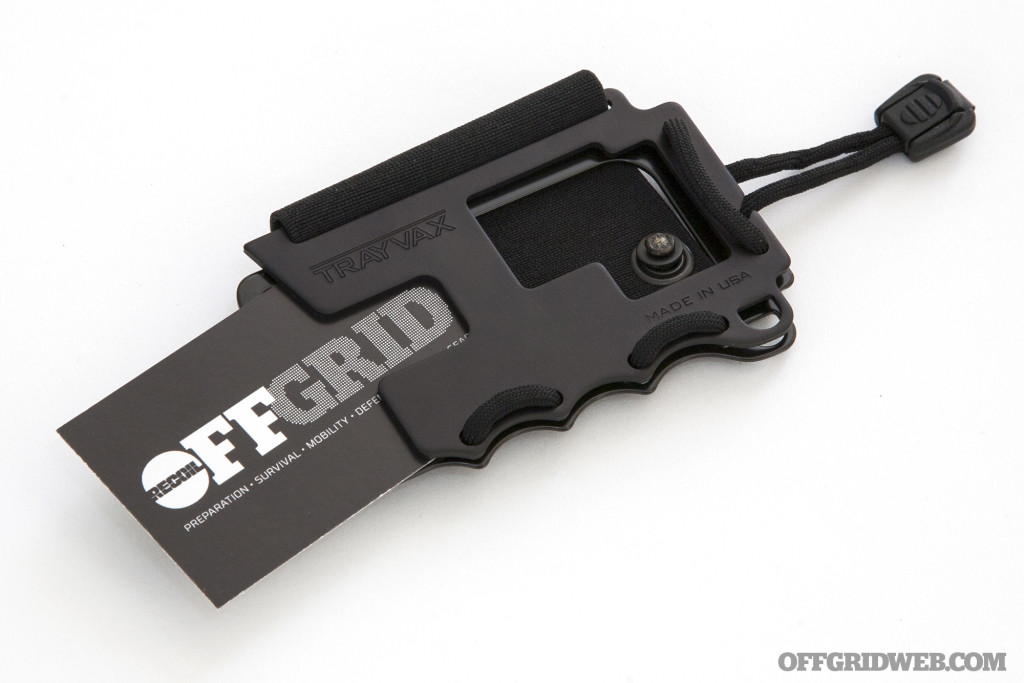
We would've preferred some sort of clasp or strap at the open end for peace of mind — especially because the elastic's tension will surely loosen over time. Fortunately, the next two wallets deliver on this request.
The Trayvax Axis

As indicated by its name, the Trayvax Axis is a hinged bifold design, with two stainless steel plates. These plates are available in six different colors of corrosion-resistant Cerakote, as well as plain black and bare-metal tumbled finish.

Instead of stretchy elastic and hook-and-loop closure, the Axis relies on a black nylon strap with a grommet that hooks onto a prong on the wallet's front edge. This clasp provides much better card retention than the Original wallet, and the strap can be tightened further by cinching down the paracord.
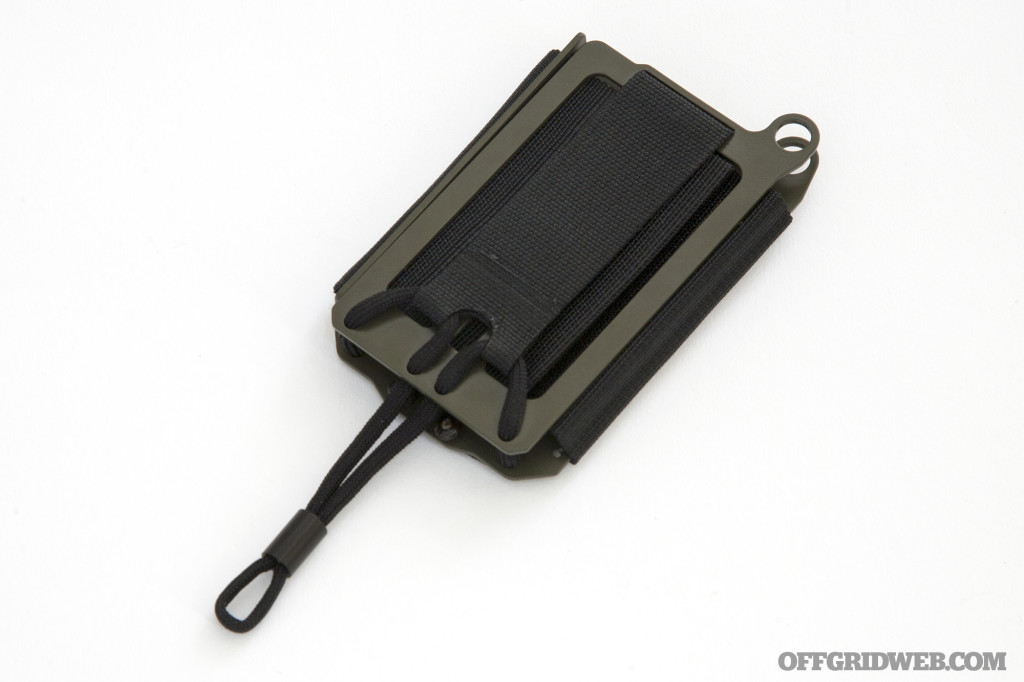
The Axis is available at an MSRP of $50. It doesn't offer a bottle opener like the Original, but it does have similar RFID-blocking properties. It also offers a slightly larger capacity range of 1-14 cards and 1-8 bills. We liked the addition of a cash clip on the back plate, as well as the nylon webbing that divides the contents into four organized sections.

Due to the clasp closure and quick-access bifold design, we liked the Axis better than the Original. We missed the lack of a bottle opener, but other than that, we'd feel more secure carrying this wallet on a daily basis. If you're still concerned about the clasp coming un-done, you can even clip a carabiner or keyring through the attachment loops in the top right corner, locking the metal plates together.
The Trayvax Element

The Element wallet is Trayvax's flagship design, and the company says it's intended to look “tough enough for the job site, but stylish enough for date night”. Thanks to the use of natural American-sourced, oil-tanned leather, the Element exhibits a style that's less tactical and more classy. The leather is available in four colors — Stealth Black, Tobacco Brown (pictured here), Mississippi Mud, and Canyon Red. This leather is wrapped around a one-piece RFID-blocking stainless steel frame, finished in either raw tumbled steel or satin black coating.
Update: Trayvax recently let us know that the Element's steel frame has been updated as of November 2016, improving functionality of the bottle opener and other features. The model we tested is an older Element, so your mileage may vary with the latest version.
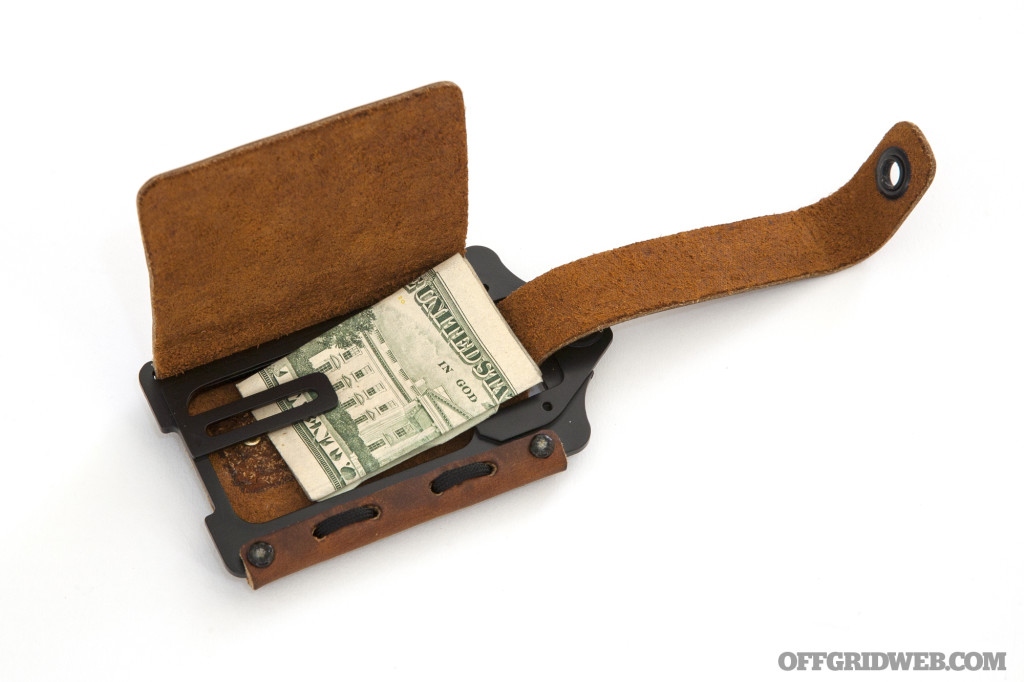
To open the Element, pull the leather closure strap off its peg, and flip open the flap underneath. This reveals an integrated money clip, as well as a space for card storage on the opposite side of the frame. The strap also passes through an integrated bottle opener, near the end of the frame with the lanyard attachment hole. Overall listed capacity for the Element is 3-10 cards and 1-5 bills, and the MSRP is either $80 for raw stainless or $85 for black finish.
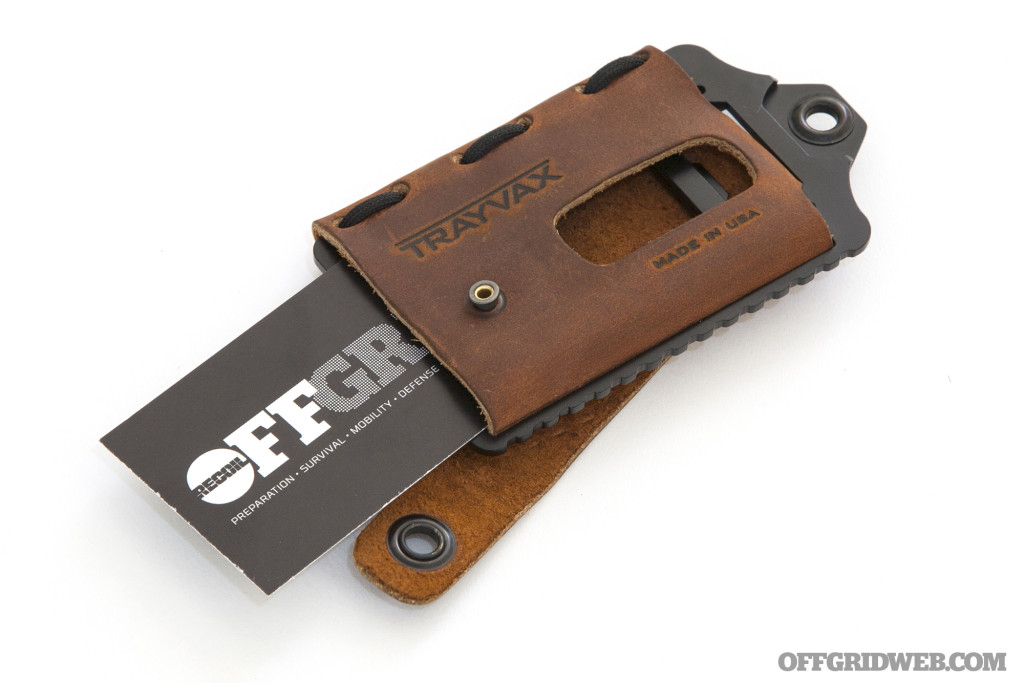
While the bottle opener is nice to have, its placement makes it tricky to use without displacing the contents of your wallet. That may be for the best, since you might not want to risk spraying your beverage of choice all over your cash and cards.
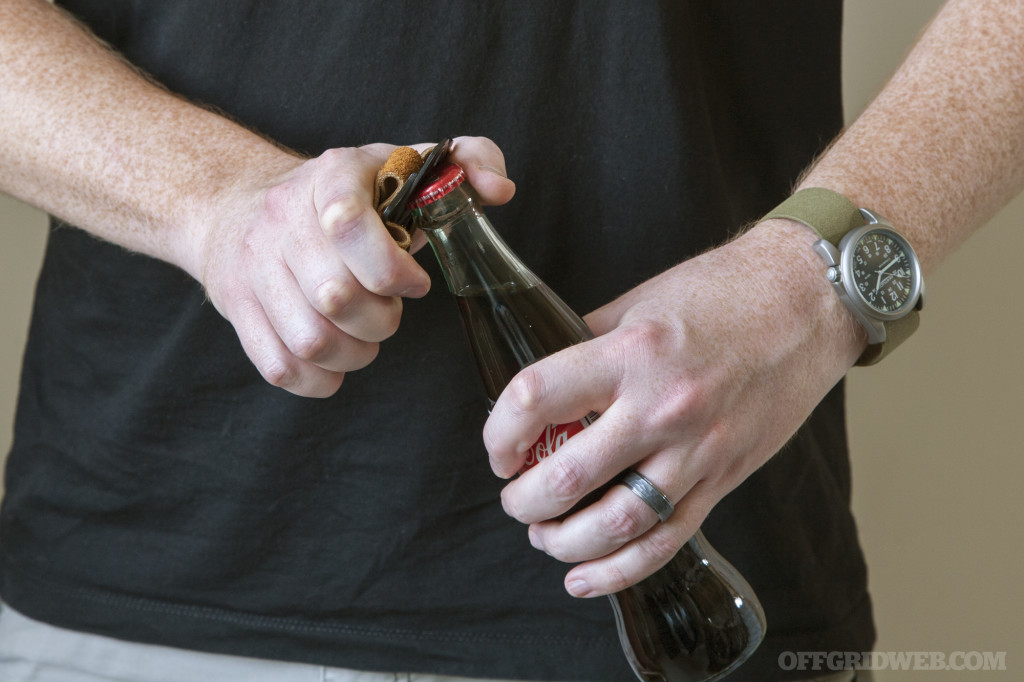
Fortunately, Trayvax made a bottle-opening accessory to complement the Element: the Keyton bottle opener keychain.
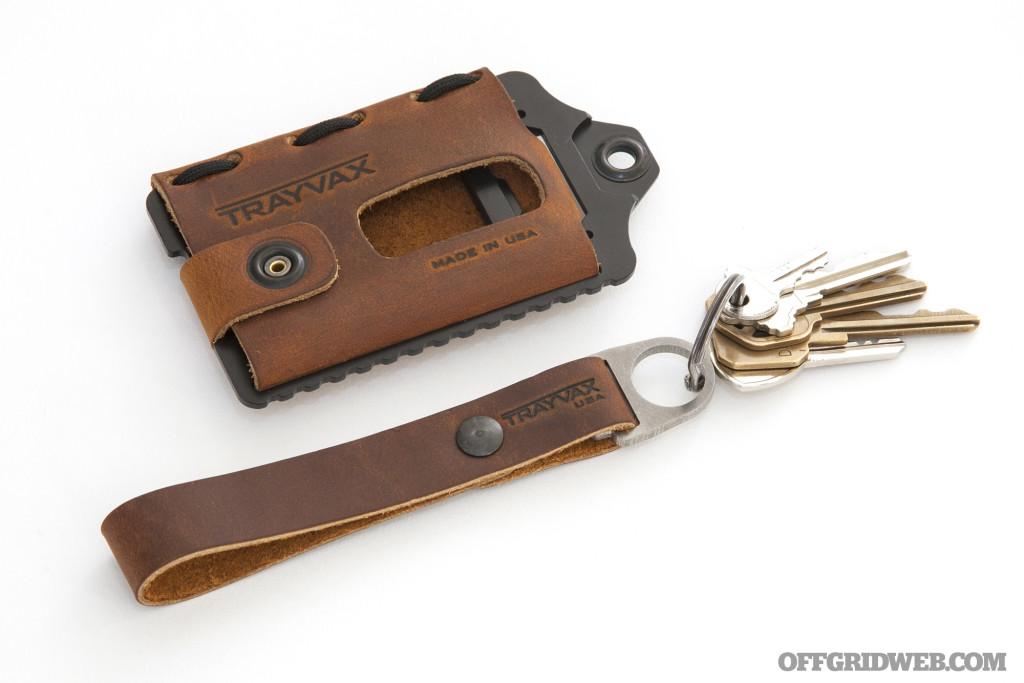
The Keyton is available in the same leather and steel finishes as the wallet, and can be used as a matching key fob. When you need to open a cold one, there's a bottle opener hidden inside the strap.
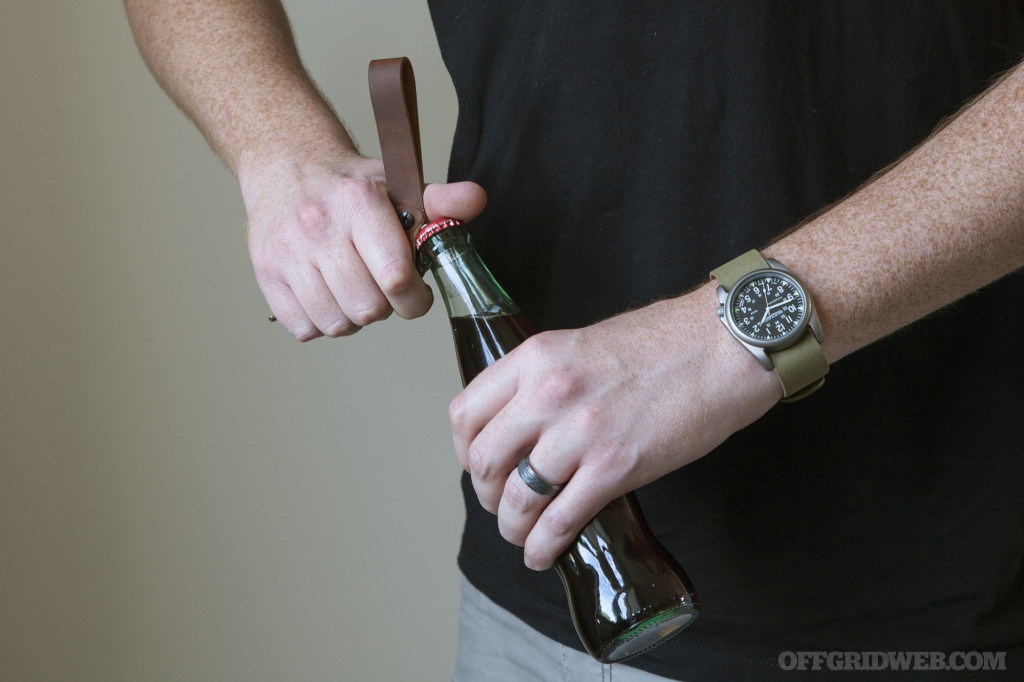
MSRP for the leather Keyton is $15, or you can get a mil-spec nylon version for $13.
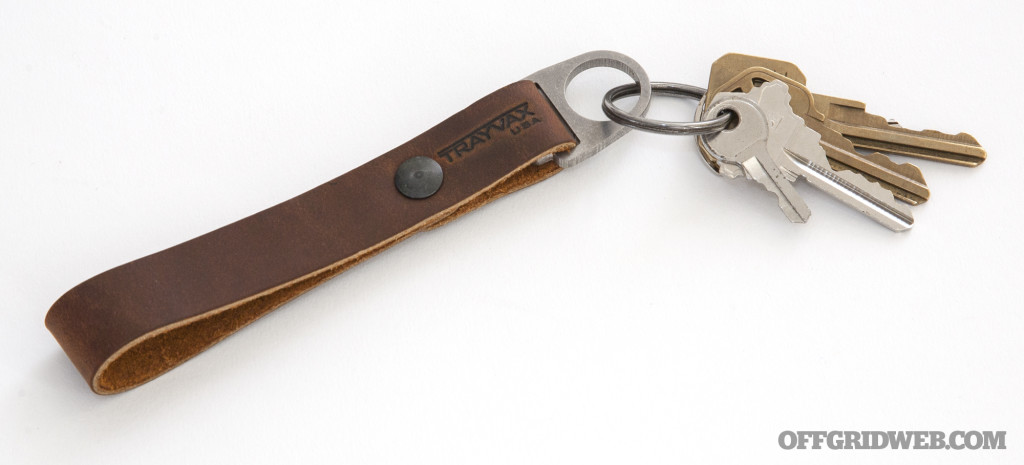
Of all the Trayvax wallets we tested, we liked the Element the best. Its American-sourced leather is soft and smooth to the touch, and it offers a secure closure strap to keep your wallet contents in place. While the built-in bottle opener placement isn't ideal for frequent use, the Keyton keychain complements this nicely. Our only critiques of the Element are its slightly smaller capacity compared to other Trayvax models — you'll need to keep contents to a minimum with this wallet — and its substantially higher price tag.
Conclusions

If you're looking to break away from the bulky billfold paradigm and simplify your EDC gear, Trayvax wallets provide an appealing solution. They're built in the USA from high-quality materials, and they're designed around tough metal frames that protect your cash and cards from impacts and RFID skimming.
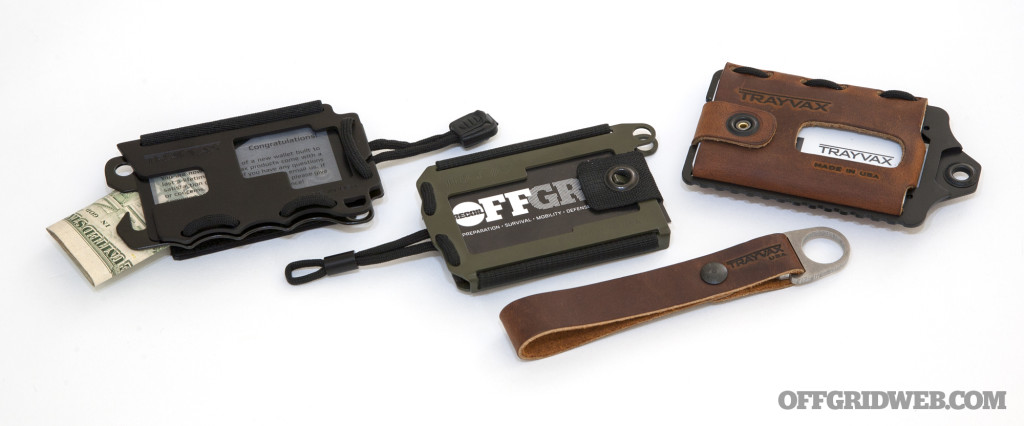
Trayvax also stands behind all of its wallets with a lifetime warranty against hardware failure during normal use. That includes broken straps, loose grommets, snapped paracord, and worn out Velcro. So, you shouldn't need to worry about damaging your wallet, no matter where you take it. These wallets are built to last.
For more information on Trayvax wallets and EDC accessories, visit Trayvax.com.

